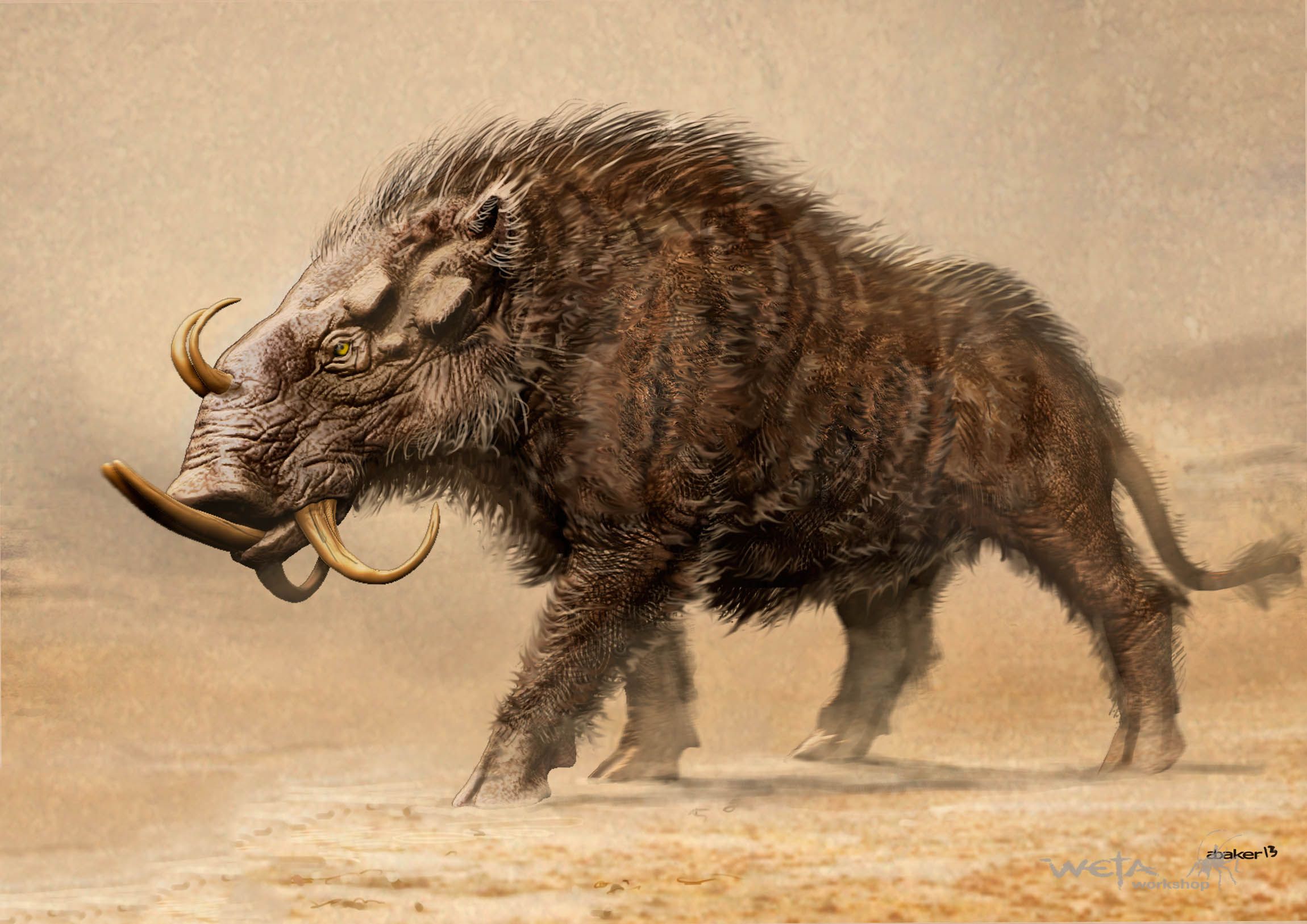Difference between revisions of "Hylochloerus"
Tao alexis (talk | contribs) |
Tao alexis (talk | contribs) |
||
| Line 11: | Line 11: | ||
| HD = 7 | | HD = 7 | ||
| AP = 5 | | AP = 5 | ||
| − | | THAC0 = | + | | THAC0 = 17 |
| hpdie = d12 | | hpdie = d12 | ||
| attack = teeth & tusk | | attack = teeth & tusk | ||
Revision as of 20:28, 6 November 2020
| Species | swine (boar) |
| No. Appearing | 2–8 |
| Behaviour | subsocial (sounder) |
| Range | rainforest, savanna |
| Size | 5 ft. at shoulder |
| Weight | 1,600 lbs. |
| Intelligence | 3 |
| Armour Class | 6 |
| Hit Dice | 7 |
| Action Points | 5 |
| Max. Stride | {{{stride}}} |
| THAC0 | 17 |
| Hp/Die | d12 |
| Attack Forms | teeth & tusk |
| Damage | 5–20 & 1–10 |
| Special Attacks | aggression |
The hylochloerus, also called the giant boar, is a terrifying predator that is unlikely to be found near inhabited areas. The animal has extensive hairs on its body, though these tend to thin as the giant boar ages. In colour, it ranges from ratty brown to black. Its teeth extend upwards from the jaw, commonly being 9 to 11 inches in length, while the tusks growing out of its nose curl backwards and are typically about 6 to 8 inches long. The side curling tusks may reach lengths of 28 inches.
The giant boar is as aggressive as its smaller cousin, gaining a +2 bonus to hit when attacking. The jaws are able to extend open a distance of 28 inches, enabling the boar to gouge upwards for the soft parts of its enemies. It will then attack with either tusk on the side of its head, but not both in a single round. Usually it attacks with its tusks to the side, rather than at enemies straight on.
Domestication
On occasion, hylochoerus have been caught and caged, for the purpose of releasing them on battlefields in order to break the will of the enemy. In these cases, the boars are still wild. However, the animal is surprisingly intelligent and perceptive. They have been raised from the time they are young to be moderately tame, though they must always be carefully handled and will always be very aggressive to strangers. Druids and rangers often acquire them as watch-animals and even friends (through speak with animals), receiving the kind of loyalty one might expect from dogs.
See Bestiary
